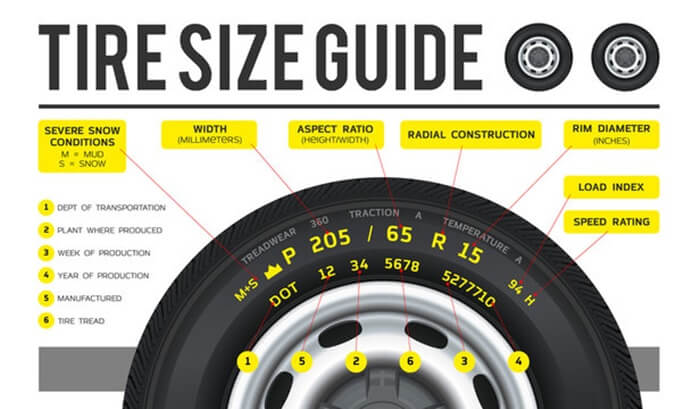Tires are critical components of our cars. For tires to offer us the best performance, however, we have to fit them on compatible rims. One of car enthusiasts’ most frequently asked questions is, is it possible to fit a 16-inch tire on a 16.5 rim?
The answer to this question depends on the tire brand. With some tire brands, the 16-inch tire will fit perfectly on a 16.5 rim with minimal stretching. With some other brands, however, it might not be possible to fit a 16-inch tire on a 16.5 rim. This is mainly because the hole in the center of the tire might be too small to fit on the rim.
The best thing to do if you want to fit a 16-inch tire on a 16.5 rim is to consult a tire professional. They will advise you on the tire brands that will give you an easy time doing the task.
Advice on Picking Tires for Rims
While the ordinary driver may not be completely aware of what to look for when purchasing new tires, changing tires and rims is easy if you adhere to a few fundamental guidelines.
Tire Size
When looking for new tires, you could come across several size designations as 225/75R15 and P235/65R15. To comprehend the sizes for particular rims, you need to be able to read labels.
The numbers 225 and 235 represent the tire width in millimeters from sidewall to sidewall. The more road the tire contacts, the higher this value. On the left side, a letter designates the type of tire. For instance, in our case, we have the letter P that shows that these are passenger tires.
You are also informed in this document that the tire was made in compliance with US standards. If there isn’t a letter, it was produced per European standards. The two variants have different load capacities.
You might also come across LT or ST. LT indicates that the tires are intended for the lightweight trucks. Tires with this letter can accommodate a higher psi to handle larger loads more effectively.
“ST, on the other hand, indicates that the tires are suitable for special trailers. Such tires can only be used on trailer wheels.
Using this knowledge, we can determine that a P235/65R15 tire is a passenger car tire with a width of 215 millimeters.
On the right side of the slash are two numbers, a letter, and two more numerals. The first set of numbers shows the aspect ratio of the tire. The aspect ratio is the percentage of the sidewall height compared to the width of a tire. In our P225/65R15 example, these numbers equal 65, meaning that the tire’s sidewall height is equivalent to 65 percent of its width.
The center letter, generally “R,” which stands for “radial,” denotes the type of construction used to make the tire. This suggests that the layers of the tire are radially arranged.
The last number is significant since it tells you what size rim the tire will fit. In our situation, this number is 15, signifying that the tire can be installed on a rim with a 15-inch diameter.
Staggered tires, often known as different-sized rims and tires, are sometimes appropriate for the back and front wheels. This is particularly typical for muscle cars like the Mustang, Camaro, and Challenger. This works because the front wheels do not need to rotate as much as the back wheels.
The expense and difficulty of replacing your tires will increase as your rim gets bigger. Larger wheels are typically paired with thinner tires. The tires must fit inside the wheel well. Your tire’s ability to withstand potholes and rougher roads decreases as it becomes thinner, which can lead to blowouts.
The wheels and tires of your car are essential parts. Although it might seem obvious, many drivers don’t give much thought to the tires they buy for their cars, which can cause several problems.
Here You can Check Tire Size Guide Graph

What Quantity of Rubber Will You Need?
One of the reasons people prefer larger wheels and tires is the contact patch, or more precisely, how much of the tire contacts the surface at any given moment. It’s possible that you modified your engine to have more power, and as a result, your tires are now bursting at the seams. Consequently, you’ll require more ground contact.
While adding width, you might also want to increase your wheel’s diameter. Then, you can fit a tire with a lower profile and broader tread for better handling. Due to the decreased profile, the wheel and tire’s overall diameter assembly remains constant.
A Plus 1 upgrade occurs when the tire’s sidewall is reduced by one inch while the wheel’s diameter is raised by the same amount. On most cars, you can go even lower in profile with plus 2 or 3 upgrades without facing any problems.
The same idea applies when you reduce the diameter of your wheels by an inch while compensating for the inch difference in the sidewall height of your tires.
Keeping the overall tire diameter constant can prevent any noticeable fluctuations in your speedometer, which determines your car’s speed by counting the number of times its wheels spin. If your wheels are turning less or more frequently than they used to due to a tire with a noticeably altered tire diameter, your speedometer won’t accurately display your speed.
How to FIT a SMALLER TIRE on a Bigger RIM
Grading of Tire Quality
Another crucial factor to take into account is the UTQG or Uniform Tire Quality Grading. This grading and stamping are required for passenger automobile tires in the summer and all-season categories. Light truck tires, winter tires, and motorcycle tires are exempt from this rule.
The goal of quality grading is to simplify the process of choosing tires. The system’s objective is to give you quick, comparable information so you can choose a product wisely.
However, the scores are based on test results obtained in unique conditions. This implies that similar statistics may not accurately reflect your driving habits, environmental factors, etc. You should still ask your service or tire professional for help.
Final Take
Whether you can fit a 16-inch tire on a 16.5 rim depends mainly on the tire brand. With some tire brands, the task will be easy, while with some other tire brands, this might not be possible at all.
